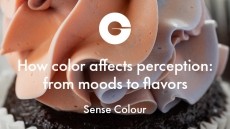Nestle deepens taste understanding
molecular basis behind why artificial sweeteners taste sweet at low
levels and metallic at higher levels.
The research, published in the American Journal of Physiology: Regulatory, Integrative and Comparative Physiology , reports that a specific receptor in humans, TRPV1, typically involved in the perception of, heat, pain and noxious stimuli, also detects artificial sweetener off-tastes.
"Our results identify a novel group of compounds that activate TRPV1 and consequently provide a molecular mechanism that may account for off tastes of sweeteners and metallic tasting salts," wrote the researchers, led by Johannes le Coutre from NRC.
Dr. le Coutre told FoodNavigator.com that the research is ultimately intended to investigate the relationship between taste and spice "Most spices are not at all tasting: They activate the trigeminal system," he added.
Taste is a key driver in the €3.2 trillion global food industry and a greater understanding of the physiology of consumers, could lead to strong market advantages.
The researchers investigated the perception artificial sweeteners and why some taste sweet at low concentrations, but at higher concentrations their taste is described as unpleasantly bitter, metallic and irritating.
Why this should occur has been poorly understood until now.
Le Coutre and co-workers report that saccharin, one of the most widely used artificial sweeteners, exhibits a strong ability to activate the TRPV1 receptor, best known for its sensitivity towards capsaicin, the principle spicy compound in hot chili peppers.
"It seems that at high concentrations artificial sweeteners activate all bells and whistles in the chemosensory detection pathways of the oral cavity," said le Coutre. Activation of TRPV1 by artificial sweeteners was unexpected, said the researchers, but the real surprise occurred when the researchers tested the ability of divalent metal cations, which impart metallic off-tastes, to activate TRPV1.
Using Ca2+ imaging on TRPV1 receptors expressed in HEK293 cells and on dissociated primary sensory neurons the researchers report that artificial sweeteners activate TRPV1 receptors and, moreover, they sensitise these channels to acid and temperature.
It was also found that the metallic tasting salts copper sulphate, zinc sulphate, and iron sulphate activated these receptors.
The combined findings indicated that the distinct transmission of specific stimuli into the brain is more complex than originally thought, they said.
"If one receptor can be activated by both spicy and metallic stimuli, the next challenge will be to understand how these perceptions are separated in the brain," said le Coutre.
The research is the first jointly published results of the long-term partnership signed between Nestlé and the Swiss Federal Institute of Technology (EPFL) to investigate the role of nutrition in cognitive function.
The agreement, signed in November 2006, is Nestlé's largest collaboration with a university of research institute, will see the company contributing up to CHF 5 million (€ 3.1 million) every year for five years, with a review after four years to potentially extend the project further.
Researchers from Duke University Medical Center also participated in the study.
Source: American Journal of Physiology: Regulatory, Integrative and Comparative Physiology Published on-line ahead of print, doi:10.1152/ajpregu.00286.2007 "Artificial Sweeteners and Salts Producing a Metallic Taste Sensation Activate TRPV1 Receptors" Authors: C.E. Riera, H. Vogel, S.A. Simon, and J. le Coutre













